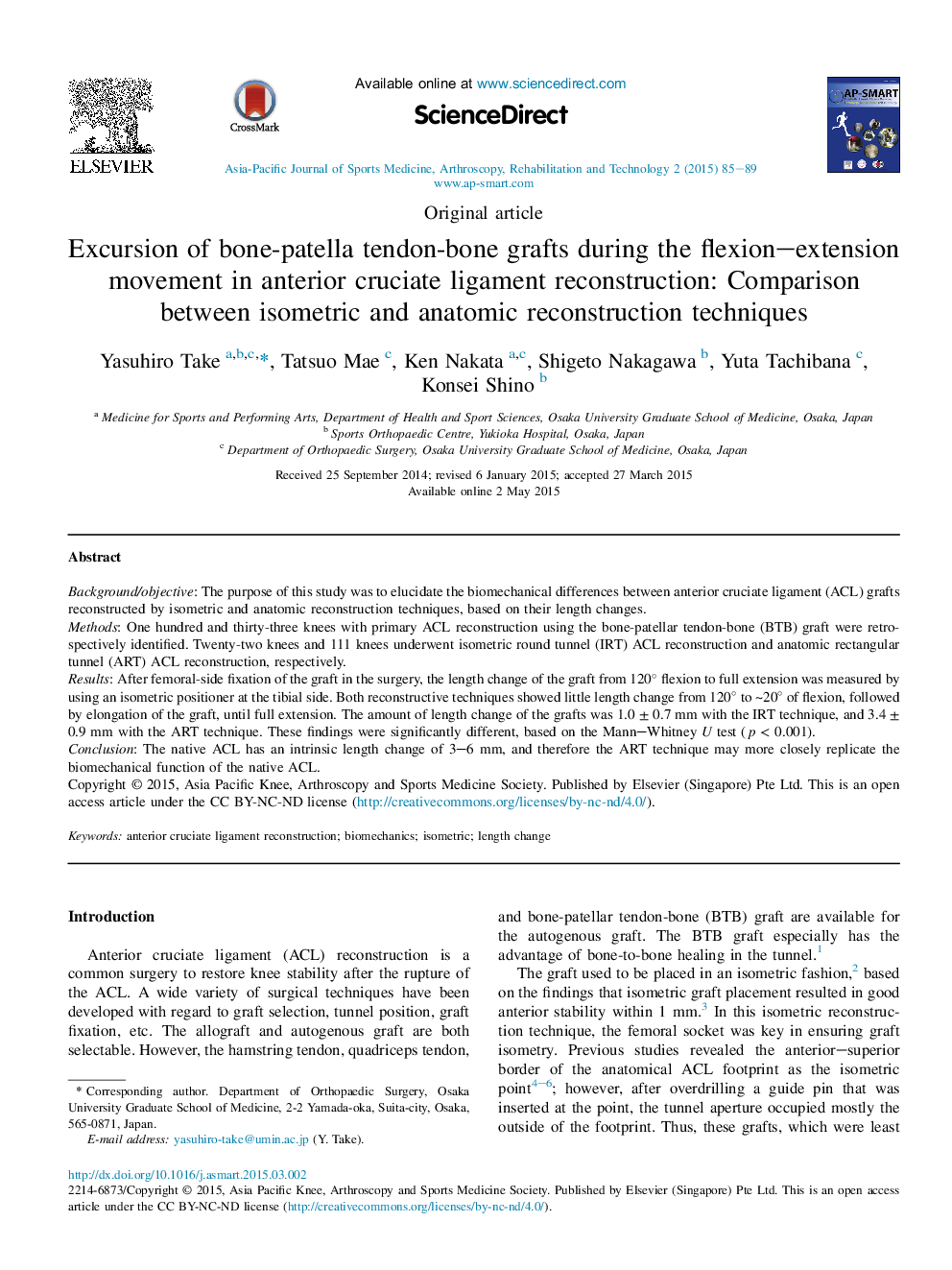| Article ID | Journal | Published Year | Pages | File Type |
|---|---|---|---|---|
| 2739499 | Asia-Pacific Journal of Sports Medicine, Arthroscopy, Rehabilitation and Technology | 2015 | 5 Pages |
Background/objectiveThe purpose of this study was to elucidate the biomechanical differences between anterior cruciate ligament (ACL) grafts reconstructed by isometric and anatomic reconstruction techniques, based on their length changes.MethodsOne hundred and thirty-three knees with primary ACL reconstruction using the bone-patellar tendon-bone (BTB) graft were retrospectively identified. Twenty-two knees and 111 knees underwent isometric round tunnel (IRT) ACL reconstruction and anatomic rectangular tunnel (ART) ACL reconstruction, respectively.ResultsAfter femoral-side fixation of the graft in the surgery, the length change of the graft from 120° flexion to full extension was measured by using an isometric positioner at the tibial side. Both reconstructive techniques showed little length change from 120° to ∼20° of flexion, followed by elongation of the graft, until full extension. The amount of length change of the grafts was 1.0 ± 0.7 mm with the IRT technique, and 3.4 ± 0.9 mm with the ART technique. These findings were significantly different, based on the Mann–Whitney U test (p < 0.001).ConclusionThe native ACL has an intrinsic length change of 3–6 mm, and therefore the ART technique may more closely replicate the biomechanical function of the native ACL.
